Quick, easy, and delicious South Indian style upma recipe with flattened rice or beaten rice with a hint of coconut. Check out my aval upma or thengai aval recipe with detailed step-wise pictures! A comforting poha recipe in less than 20 minutes flat!
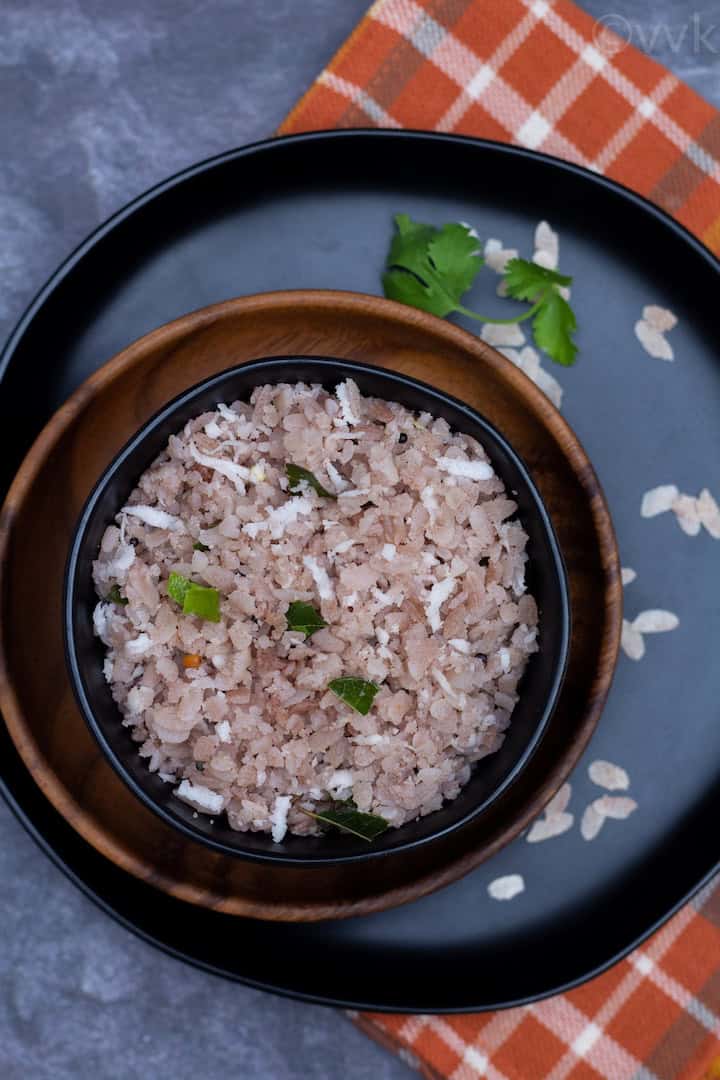
After semiya upma, here I am with another upma recipe, and this time it is with poha/flattened rice. Recently I received a lot of healthy tiffin recipes and also bachelor-friendly and easy to make recipe requests. I have quite a few recipes lined up, and I am starting the series with this thengai aval recipe.
Flattened rice is quite popular across the Indian subcontinent and is popularly known as poha in Hindi and aval in Tamil. Today, I am going to share the South Indian style aval upma, popularly known as thengai aval. Thengai means coconut, and aval is the flattened rice. It is more like coconut rice but made without rice. :-)
All you have to do is rinse and let the poha sit for a few minutes. Let it absorb all the water and become soft. And then you need to temper it. That’s it. Can a recipe get easier than this? No right?
Aval | Poha – Must have pantry ingredient:
Be it red aval or white aval; it is one of the must-have ingredients in the pantry. Not only for idli-dosa batter, but you can also make a variety of recipes with aval. Just wash and soak the poha in milk along with sugar and relish it as a quick breakfast as a substitute to sugary cereals. And this upma is yet another simple delicacy that you can make.
You can prepare this dish for breakfast or dinner or as an evening tiffin. It’s perfect to curb those evening hunger pangs. Instead of going for fried goodies, make this simple aval. Your tummy and body will thank you.
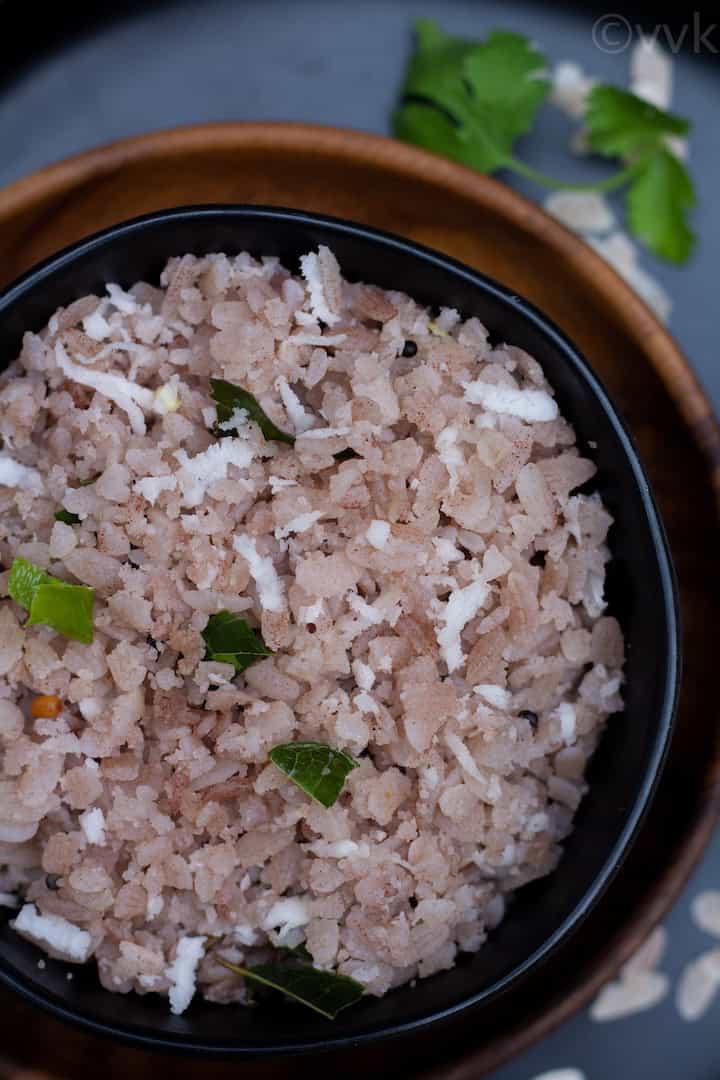
On festive days, I always opt for aval payasam for prasadam as it’s easy to make. I have more aval recipes coming on my way, so let me stop here. :-)
Aval Varieties-
You can readily find red aval and the white ones in the market. While you can pick either one, I would recommend the thick poha. Be it red or white, choose the thick poha variety or atleast the medium-thick. While thin poha works well for chivda, for upma, the thick ones work better. You will get perfectly soft and grainy upma with the thick variety.
These days you can find millet flakes also, and you can use those as well. I have already shared barnyard millet flakes upma. Do check it out.
Soaking Aval-
Aval upma recipe is very straightforward. The tricky part comes in washing or soaking the poha. Always use thick poha and rinse it thoroughly and drain the water right away. Drizzle some water and let it sit for 10 minutes. The sit time and water to sprinkle might vary depending upon the aval variety.
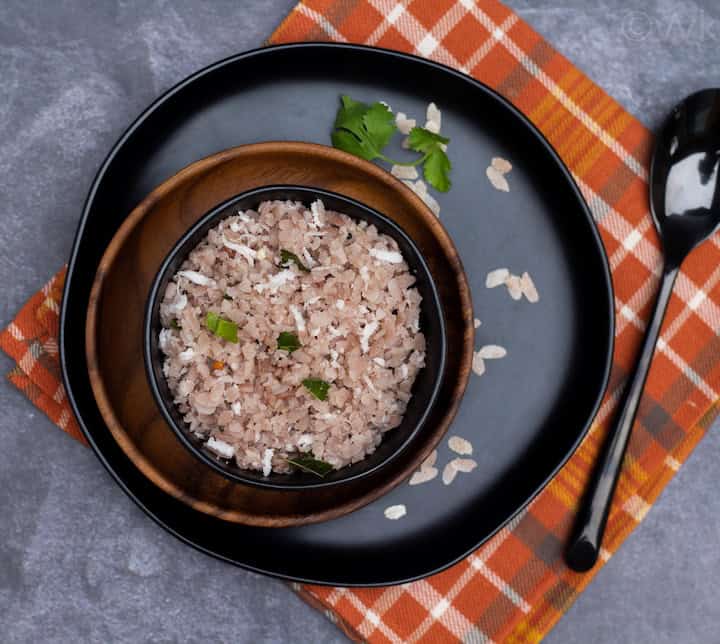
You don’t need to soak the poha for upma. For my payasam, I do soak but not more than 2 minutes, and for upma, you don’t need to soak at all.
I have made this upma with red aval, but I have a few coming up with white ones, and I will discuss the timing for those in the related post.
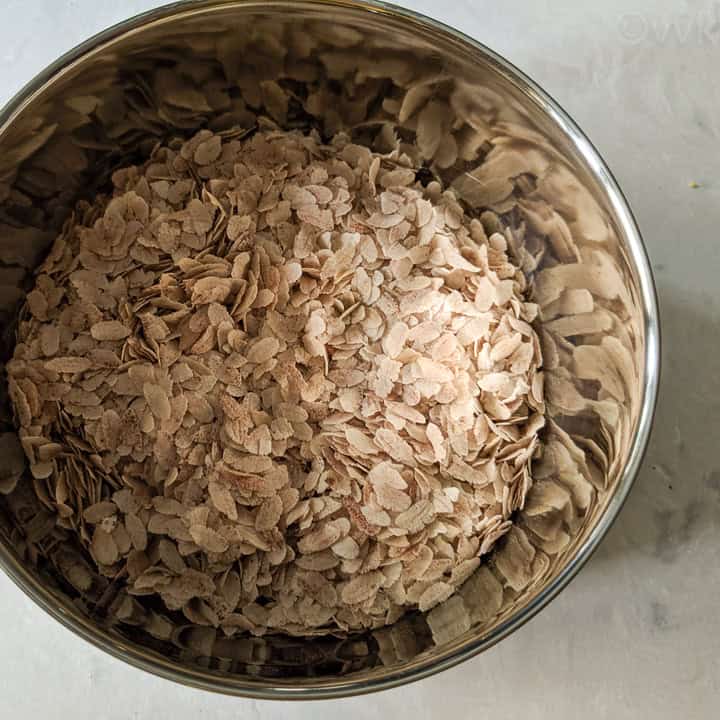
Now let’s see how to make the thengai aval upma.
- Wash the flattened rice thoroughly and drain the water.
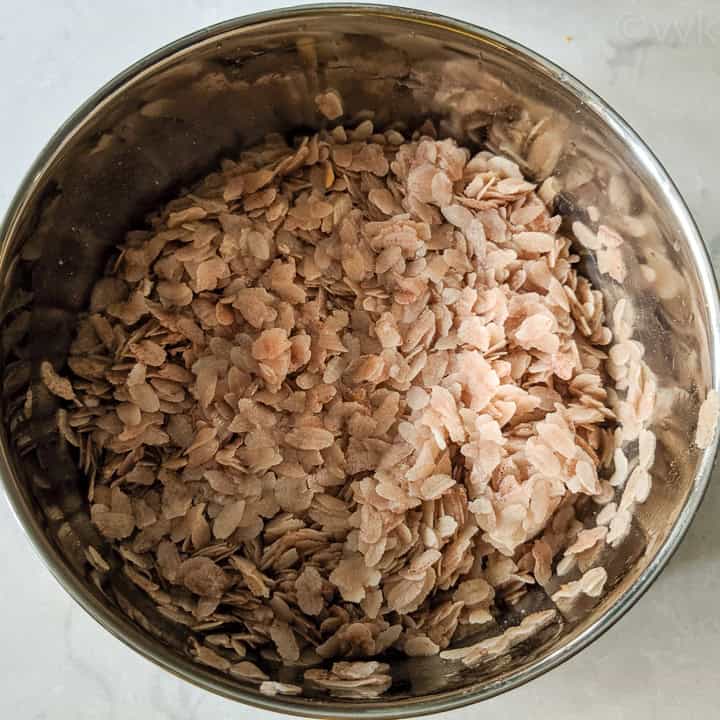
- Now sprinkle ½ cup of water and let it sit for 8 to 10 minutes. A minimum of 5 minutes is sufficient.
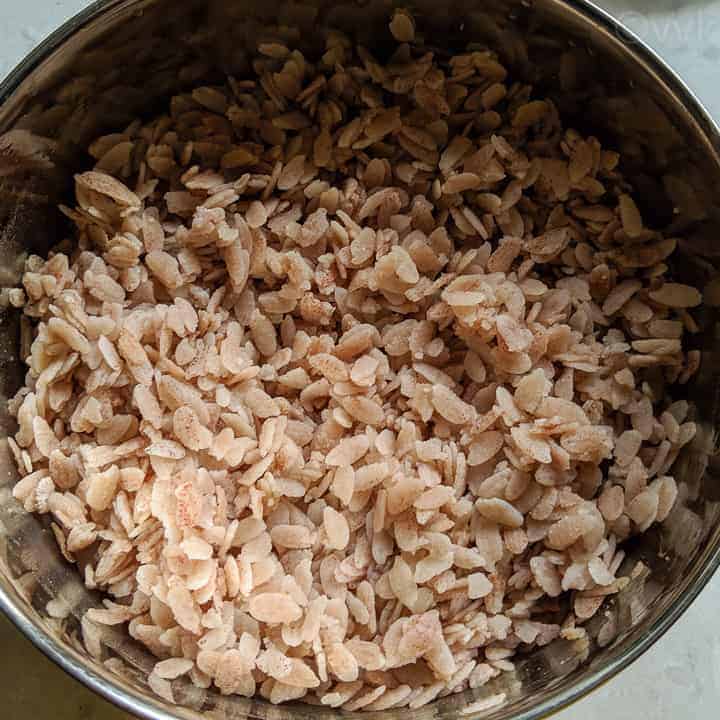
- After around 5 minutes, you can start the tempering/seasoning process.
- Heat a pan or kadai and add the coconut oil.
- When the oil is hot, add the mustard seeds, urad dal, and chopped green chili. Let the mustard seeds splutter and then add the curry leaves—Fry for 30 seconds.
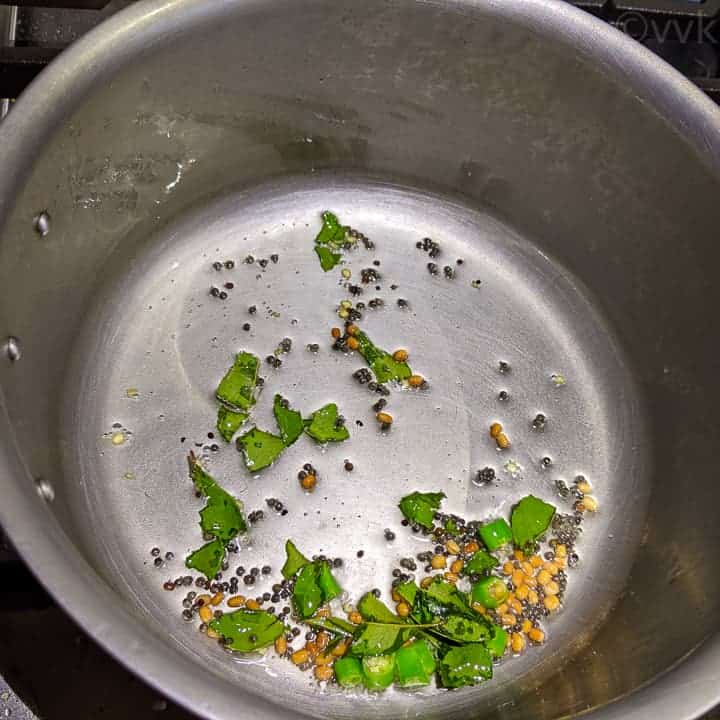
- Reduce the heat to medium-low. Now add the flattened rice. (flattened rice would have absorbed all the water that you sprinkled by now) Add the salt and gently mix.
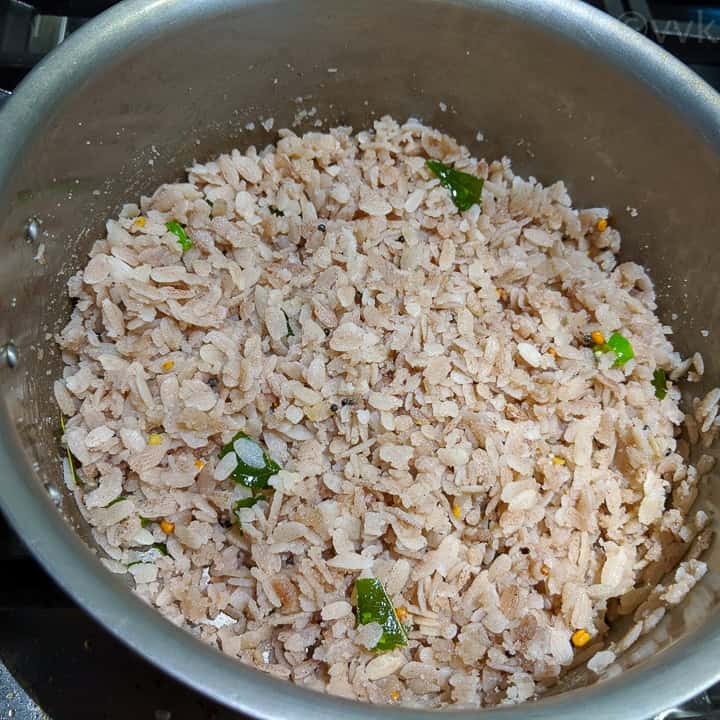
- Immediately add the coconut and gently mix. And turn off the heat.
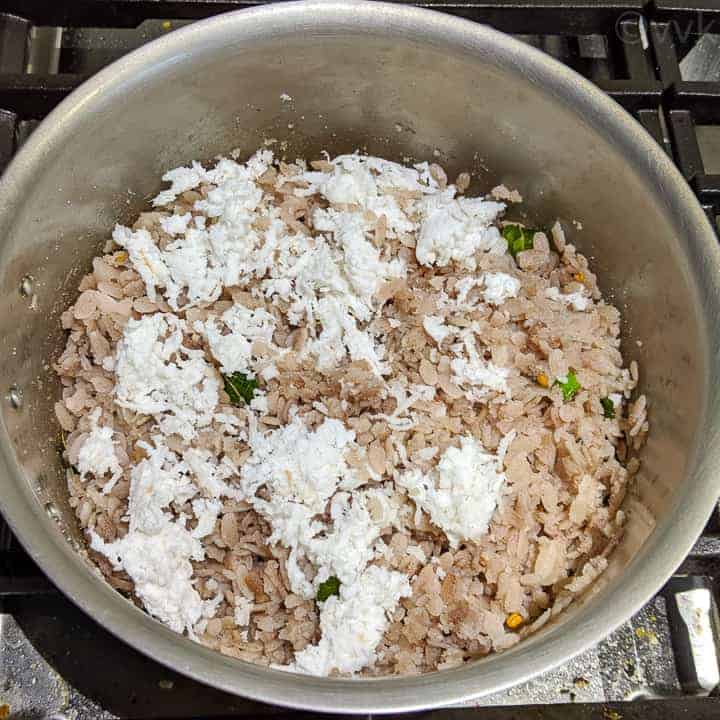
- That’s it. Aval upma is ready. Serve warm with sugar or pickle.
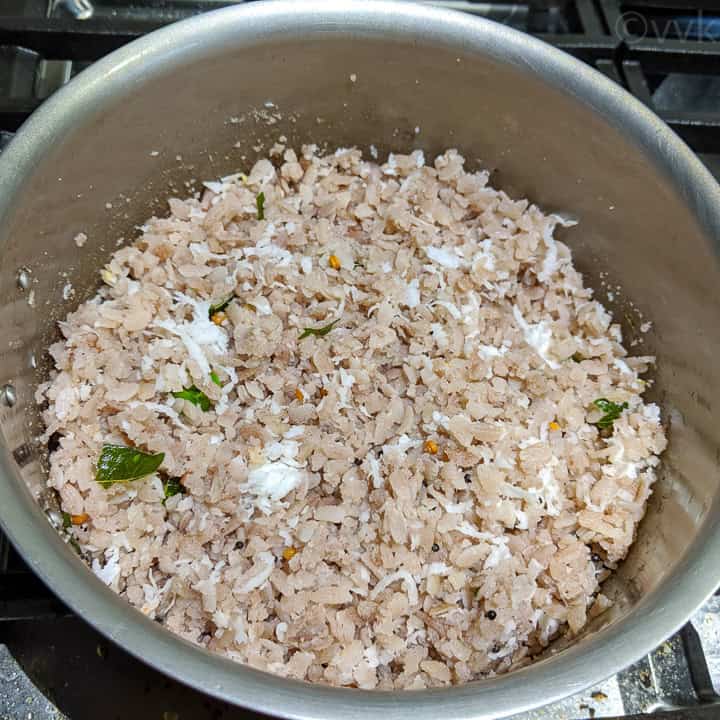
Recipe Notes-
- Adjust the green chilies and salt according to your taste preference.
- You can use white poha as well, but make sure to use the thick variety.
- I did not include any nuts. You can roast some peanuts or walnut or blanched almonds as well. Roast it first until it turns crunchy then start the tempering process.
- Coconut oil adds a nice flavor to this recipe, so I highly recommend it.
- You can add some soaked moong dal to this recipe, as I mentioned barnyard millet flakes upma.
- You can add up to ½ cup of coconut for this aval measure.

Tips for getting perfect aval upma-
- Do not soak the poha. Wash and sprinkle water. Let it sit for 5 minutes and at the maximum 10 minutes but not more than that.
- Do not overmix the poha also mix it very gently. Soaked upma tends to break but when you overmix it becomes a mush.
- After adding poha, you don’t need to cook for a longer time. Three minutes of cooking time is more than sufficient.
PS: Follow me on Instagram or join my Facebook Group for more gardening and recipe updates. If you try this thengai aval upma recipe, please don’t forget to comment and rate this recipe. If you have any questions, please leave a comment, and I will get to it asap. Make sure to follow me on my Pinterest for more healthy and delicious ideas!
📖 Recipe
Thengai Aval | South Indian Aval Upma with Coconut
Equipment
- Sauce pan or kadai
Ingredients
Measurement Details - 1 cup:240ml;1tbsp:15ml;1tsp:5ml;
- 1.5 cups flattened rice aval/poha
- 1 tbsp coconut oil
- ½ tsp mustard seeds
- ½ tsp urad dal dal
- 1 green chili chopped
- 5 curry leaves
- 1 tsp salt or to taste
- ⅓ cup coconut grated. If using frozen, thaw it to room temperature.
Instructions
- Wash the flattened rice thoroughly and drain the water. Now sprinkle ½ cup of water and let it sit for 8 to 10 minutes. A minimum of 5 minutes is sufficient.
- After around 5 minutes, you can start the tempering/seasoning process.
- Heat a pan or kadai and add the coconut oil.
- When the oil is hot, add the mustard seeds, urad dal, and chopped green chili. Let the mustard seeds splutter and then add the curry leaves—Fry for 30 seconds.
- Reduce the heat to medium-low. Now add the flattened rice. (flattened rice would have absorbed all the water that you sprinkled by now) Add the salt and gently mix—yet another critical thing in getting non-mushy and grainy aval poha. Do not mix so hard.
- Immediately add the coconut and gently mix. And turn off the heat.
- That's it. Aval upma is ready. Serve warm with sugar or pickle.
Notes
- Adjust the green chilies and salt according to your taste preference.
- You can use white poha as well, but make sure to use the thick variety.
- I did not include any nuts. You can roast some peanuts or walnut or blanched almonds as well. Roast it first until it turns crunchy then start the tempering process.
- Coconut oil adds a nice flavor to this recipe, so I highly recommend it.
- You can add some soaked moong dal to this recipe, as I mentioned barnyard millet flakes upma.
- You can add up to ½ cup of coconut for this aval measure.
Tips for getting perfect aval upma- - Do not soak the poha. Wash and sprinkle water. Let it sit for 5 minutes and at the maximum 10 minutes but not more than that.
- Do not overmix the poha also mix it very gently. After adding poha, you don't need to cook for a longer time. Three minutes of cooking time is more than sufficient.
Nutrition
I am not a nutritionist. The nutritional information is provided as a courtesy and is an estimate only. It varies depending upon the product types or brands.


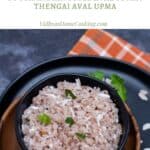
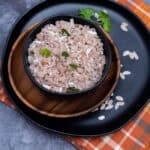

Leave a Reply